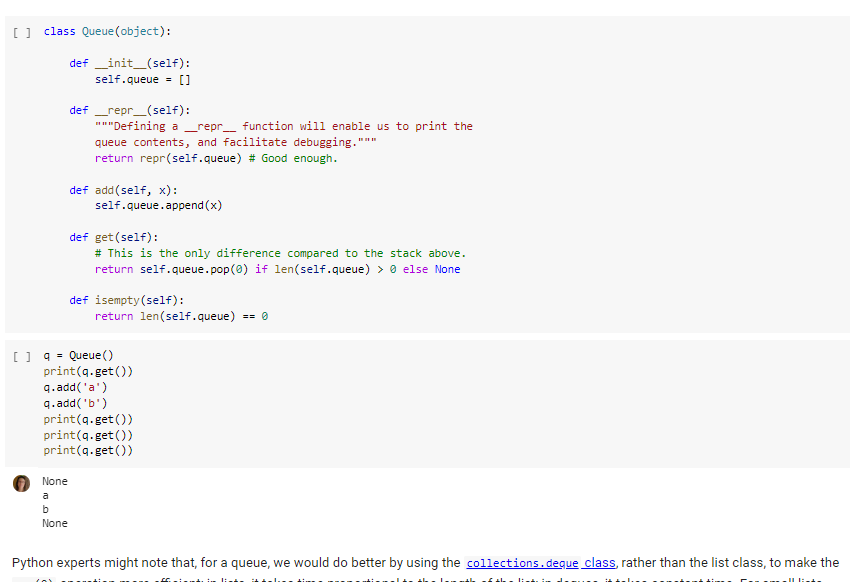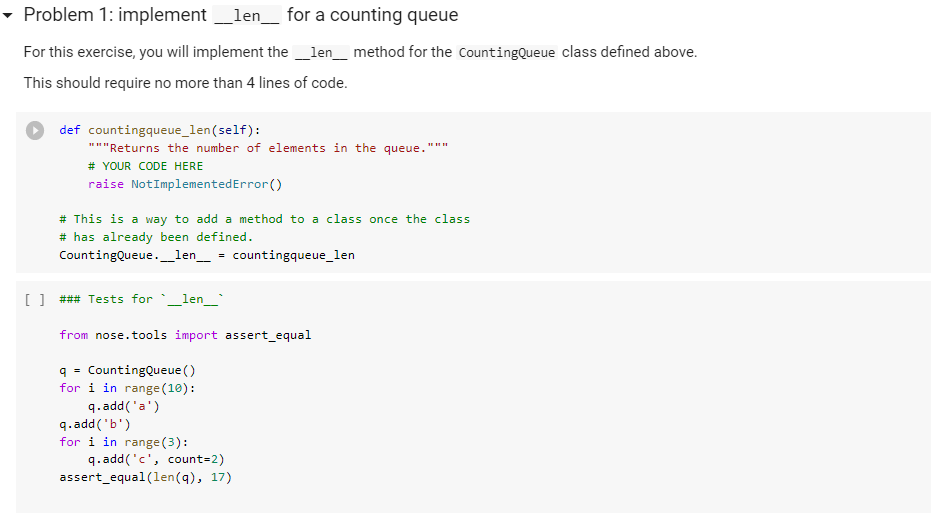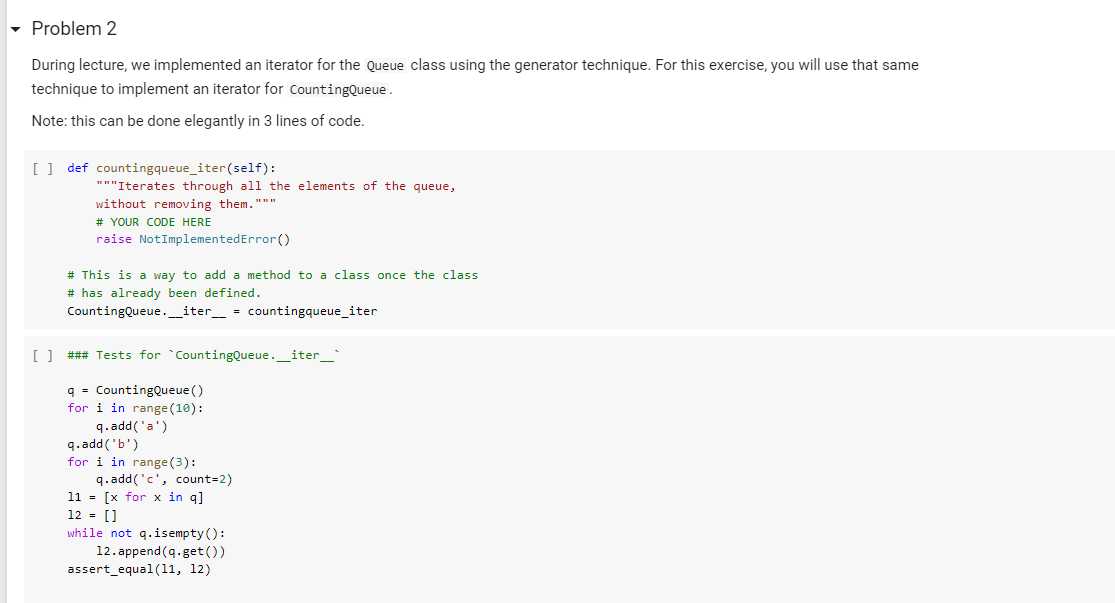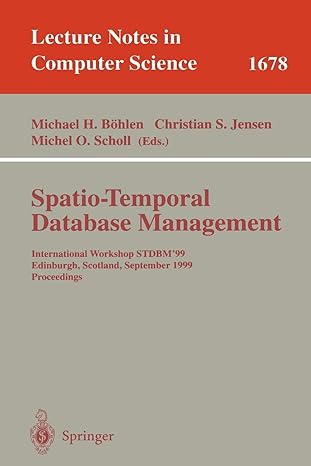Python problem: 2 problems related together, but the answer should be less than 4 lines each, thank you! During class means in the lecture.




is an element and n is the Here's the "smart" implementation of a counting queue that we saw during class. It stores pairs (2,n), where count of the number of occurrences of 2. [1] class CountingQueue (object): def __init__(self): self.queue = [] def _repr__(self): return repr(self.queue) def add(self, x, count=1): # If the element is the same as the last element, we simply # increment the count. This assumes we can test equality of # elements. if len(self.queue) > 0: XX, CC = self.queue[-1] if xx == x: self.queue [-1] = (xx, cc + count) else: self.queue.append((x, count)) else: self.queue = [(x, count)] def get(self): if len(self.queue) == 0: return None X, C = self.queue [0] if c == 1: self.queue.pop() return x else: self.queue[@] = (x, 5 - 1) return x def isempty(self): # Since the count of an element is never 0, we can just check # whether the queue is empty. return len(self.queue) == 0 [] class Queue (object): def __init_(self): self.queue = [] def _repr_(self): "Defining a _repr__ function will enable us to print the queue contents, and facilitate debugging.""" return repr(self.queue) # Good enough. def add(self, x): self.queue.append(x) def get (self): # This is the only difference compared to the stack above. return self.queue.pop() if len(self.queue) > O else None def isempty(self): return len(self.queue) == 0 [ ] 9 = Queue) print(q.get() q.add('a') q.add('b') print(q.get() print(q.get() print(q.get() None None Python experts might note that, for a queue, we would do better by using the collections.degue class rather than the list class, to make the Problem 1: implement _len__ for a counting queue For this exercise, you will implement the __len__ method for the CountingQueue class defined above This should require no more than 4 lines of code. def countingqueue_len(self): "*"Returns the number of elements in the queue."" # YOUR CODE HERE raise NotImplementedError() # This is a way to add a method to a class once the class # has already been defined. CountingQueue. __len__ = countingqueue_len ] ### Tests for `_len__ from nose.tools import assert_equal q = CountingQueue () for i in range(10): q.add('a') q.add('b') for i in range (3): q.add('c', count=2) assert_equal(len(9), 17) Problem 2 During lecture, we implemented an iterator for the Queue class using the generator technique. For this exercise, you will use that same technique to implement an iterator for CountingQueue. Note: this can be done elegantly in 3 lines of code. [] def countingqueue_iter(self): "*"Iterates through all the elements of the queue, without removing them." # YOUR CODE HERE raise NotImplementedError() # This is a way to add a method to a class once the class # has already been defined. CountingQueue. _iter__ = countingqueue_iter [] ### Tests for 'CountingQueue. _iter_ q = CountingQueue () for i in range(10): q.add('a') q.add('b') for i in range (3): q.add('c', count=2) 11 = [x for x in q] 12 = [] while not q. isempty(): 12.append(q.get) assert_equal(11, 12)










